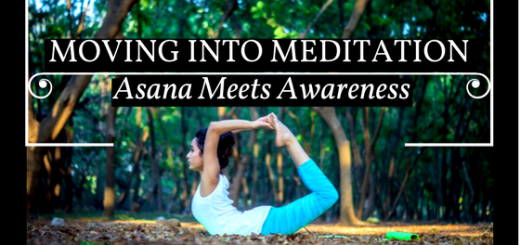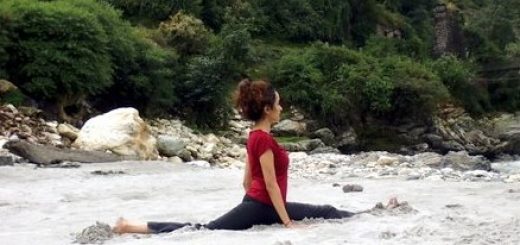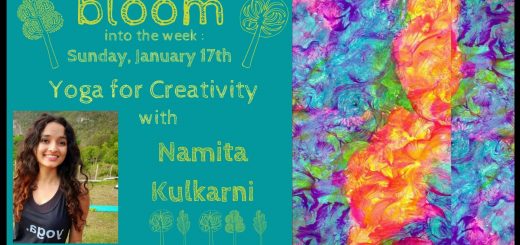Ujjayi Breath – For The Win
‘Teach me some Yoga!’ is a line I often hear as a Yoga teacher from India, on her way to everywhere. Whether it’s a genuine interest or a passing curiosity, or even part of a thinly veiled wink-addled attempt at flirting, I like to respond to this request with an enthusiastic ‘Sure, why not! Let’s start right away!’ Now if we’re out in nature in Yoga-friendly attire and a mood of i-don’t-care-who-thinks-what, a few sun salutations, warrior poses and even inversions might promptly follow. But if the circumstances and energy levels don’t quite permit making a bendy spectacle of ourselves – such as in airplanes, cafes and other places where a lot of ‘Yoga muggles’ circulate – we have just the ticket in a classic Yoga technique called the Ujjayi (pronounced ooh-JAI-yee) breath. You can do this *almost* anywhere anytime and not even the person right next to you will know – unless you want them to.
Seriously, if there was one Yoga technique I could take with me to a deserted island – or teach everyone – it would be this. You can do this seated or standing, walking, cycling, driving, what have you. It works especially well while snorkeling and diving!
The How
Here’s a 1.5 minute video demonstration of the Ujjayi breath by Yoga Journal, to give you an idea what it looks and sounds like.
With various teachers around the world, I’ve heard various descriptions of Ujjayi – from sighing with your mouth closed, to fogging up a mirror, to sipping the breath in and out through the throat, to the famous Darth Vader breath. Any of those might work for you, but the simplest description I can offer is that it’s the same constriction in your throat as you would make in a whisper. The lips are gently closed as the breath moves in and out through the nose. Aim for a soft, internal hissing sound barely audible to the person next to you. Though some schools advocate loud Ujjayi breathing, I would caution against straining your breath and vocal chords.
The Wanderer in Each of Us
What makes Ujjayi a powerful technique is its direct effect on the Vagus nerve. The Latin word Vagus means “wandering”, and the words vagrant and vagabond come from the same root. The Vagus nerve earned its name by wandering from its home in the brain to various organs such as the gut, heart, liver, pancreas, gallbladder, kidney, ureter, spleen, lungs, fertility organs (females), neck, ears and tongue. It has something of the traveller instinct, I would imagine 🙂 The kind of nerve that decided to go everywhere and juggle various jobs, coz ‘settling down’ just didn’t seem exciting enough.
Sanskrit for victory, Ujjayi breath is also called the Victory Breath, the Psychic Breath or the Ocean Breath. Because it encourages the lungs to expand in all directions, the chest expands and moves up like in a victorious warrior.
 Breathe Like the Ocean (Acrylic on canvas, painting by Namita Kulkarni)
Breathe Like the Ocean (Acrylic on canvas, painting by Namita Kulkarni)
As you practice, you will find your Ujjayi breaths getting longer and rhythmic, like rolling ocean waves. Swelling, rising and tumbling at their own pace – and peace. Close your ears with your palms as you Ujjayi, to hear the sound of the ocean in a gentle tide. The waves rolling in the distance, reminding us to breathe like we mean it.
The Science – What Happens in Vagus
…does NOT stay in Vagus. This is the nerve responsible for the heart rate and for conveying messages from the gut to the brain. The longest nerve in the autonomic (or involuntary) nervous system. And the most important nerve of the parasympathetic nervous system (the rest-and-digest department). The Vagus nerve is where science finds the mind-body connection known to Yogis from internal experiments centuries ago. Think of it as the wiring under your gut feelings and mental states.
The Benefits
Gheranda Samhita, the Yogic text from the late 17th century, says that Ujjayi breath soothes the nervous system and calms the mind, slows down the heart rate and lowers the blood pressure. And in the 21st century, Vagus Nerve Stimulation is a treatment that has been found effective against epilepsy and depression.
In my practice, I have found that it helps me hold the poses longer with less effort. Makes my nervous system a lot less ‘nervous’ anytime I try it, and turns my Asana practice into a moving meditation.
No matter what kind of Yoga floats your boat, breathing with intent and focus is what makes your practice Yoga and not just a workout. Breathing is at once our most fundamental and most under-used life skill, and every breath brings a chance to hone that skill. Experiment and experience for yourself the benefits of Ujjayi and let me know your thoughts in the comments 🙂





2 Responses
[…] inside the body, the heartbeat, any pulsing sensations, mental/physical resistance, the sound of Ujjayi breaths, any fears or limiting beliefs holding you back, the way the feet/hands interact with the earth, […]
[…] Join me for this 2-hour online workshop on Sunday, September 12 – The Magic and Science of Ujjayi breath. If you’ve ever been in my classes, you’ve likely heard me say that if there was one Yoga technique I could teach everyone everywhere, it would be Ujjayi breath. As you might know if you’re into Yoga, Ujjayi breath is a powerful breathing technique that stimulates the vagus nerve, which has a key role in the parasympathetic nervous system – the rest & restore department. If you’d like to read more about this, I have an entire blogpost dedicated to it: Ujjayi Breath – For The Win […]